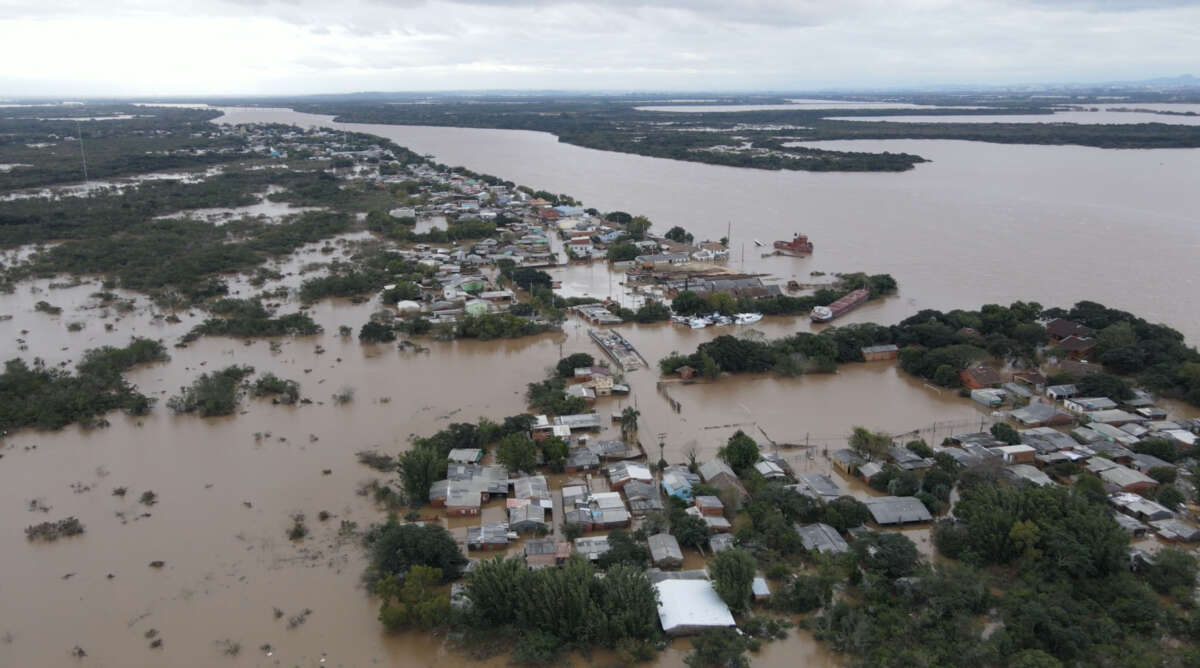In the southern Brazilian city of Porto Alegre, one building stands apart from the rest. A big homemade banner, made on what looks like a blue bedsheet, is tied up to the metal fence out front. It reads, in Portuguese, Ocupação Desabrigados da Enchente — the Homeless From the Flood Occupation.
This is one of the latest housing occupations in Brazil. Families displaced by unprecedented floods, which inundated cities across Brazil’s southernmost state of Rio Grande do Sul in early May, took over the building on the evening of Friday, May 24. They’ve been there ever since.
“This is our lifeboat,” says Liziane Pacheco Dutra. She wears a thick black jacket. Her hair is pulled back in a pony tail. “We lost everything to the flood. We have nothing. We have no bed. No food. We were disrespected at the shelter, and here we have found a connection, care and open arms. We’ve made friends. The kids play together and we are looking after each other.”
Pacheco is at the occupation with her husband, daughters and her parents. They were all displaced after days of torrential downpours across the state led to unprecedented flooding. Now, more than a month later, many homes are still underwater.
The occupation that Pacheco is taking part in is just one of multiple building occupations led by flood victims in the region. Last weekend, amid heavy rain, Gov. Eduardo Leite deployed shock troops to evict flood victims who were occupying a different abandoned building in Porto Alegre as well.
The floods are considered the worst climate disaster in the history of the region. More than 2 million people have been impacted across the state. Six hundred thousand have been forced from their homes.
“This is our salvation,” flood victim Anselmo Gomes says of the occupation. Before the rains, he delivered online orders on his motorcycle. His bike, however, has now been underwater for more than a month. “This is the chance of a new beginning.”
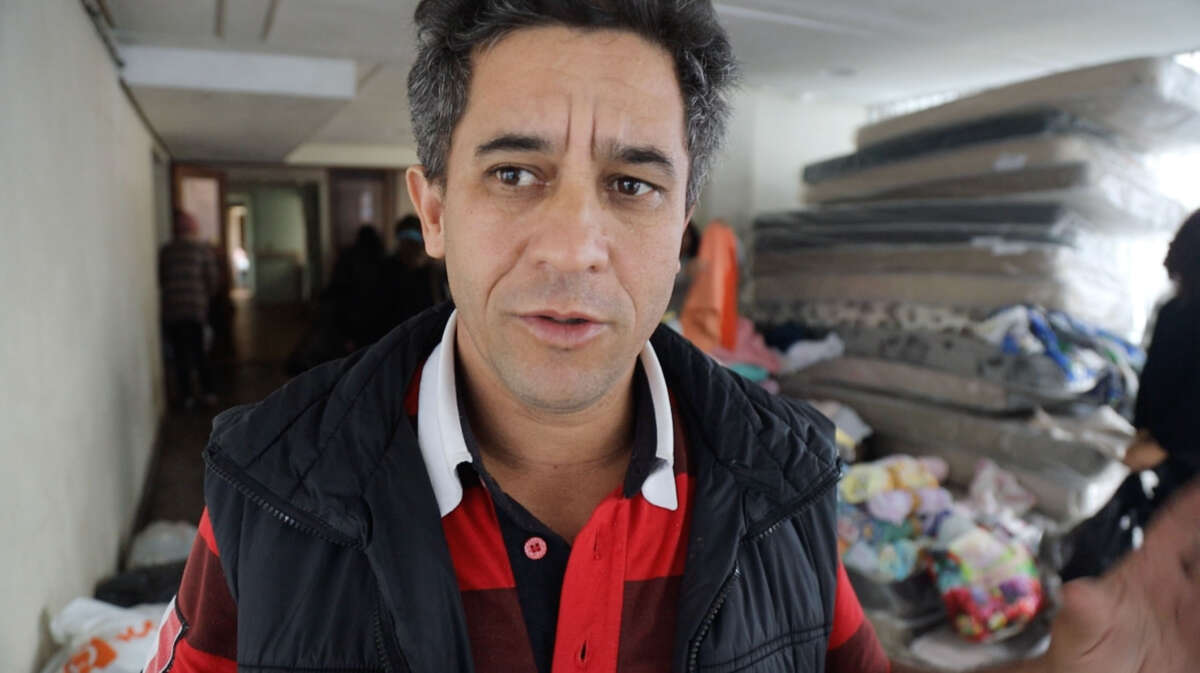
The occupation is located in a seven-story building on a residential street in the historic center of Porto Alegre. The building used to house the former Hotel Arvoredo, but it’s been vacant for more than a decade. Organizers of the occupation say they’re an autonomous group with no links to any organizations or Brazil’s diverse housing movements. They took several weeks to identify the former hotel as a good fit for their occupation, and ultimately chose it because it was no longer in use and serving no purpose within the community.
Just inside the front gate on the ground floor, a pair of young boys kick around a soccer ball. A girl sings to her little sister. Residents stand and talk as the daylight wanes outside. Without electricity in the building, dusks folds quickly into night, punctuated by the glow of cellphones and the headlights of cars that slide past on the wet pavement outside.
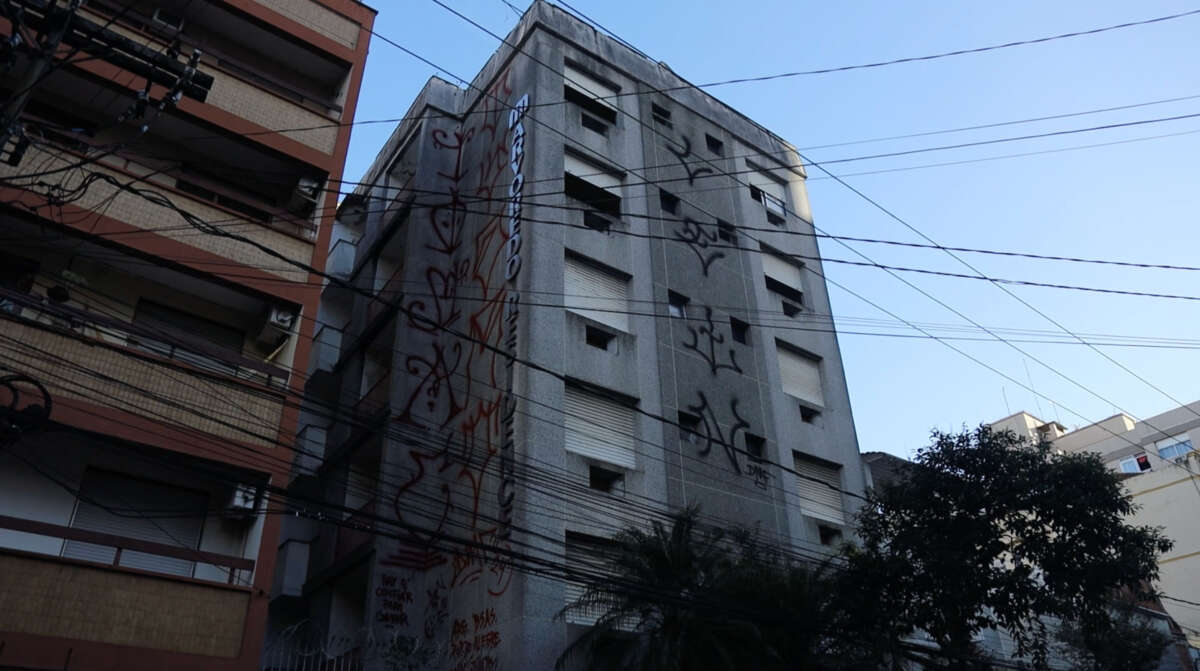
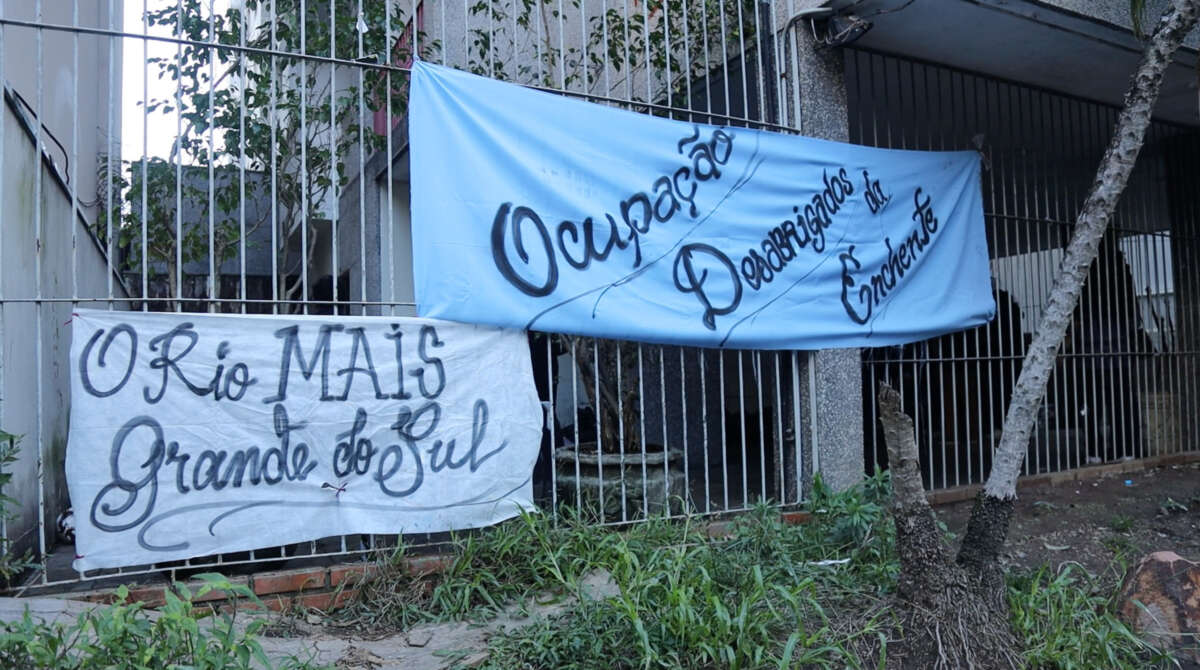
Most of the residents of the occupation are from the neighborhoods of Humaitá and Sarandi, working-class neighborhoods that were some of the hardest hit by the floods. 21-year-old Stefane Cruz is one of them. She sits in a plastic chair on the ground floor of the building. Her 5-month-old daughter coos on her lap. She’s zipped up a pink onesie and wrapped in a white blanket against the cold.
When Cruz fled her home in Sarandi, the water was already up to her waist.
“I grabbed my daughter, a backpack and a pack of diapers,” she says. “I almost dropped my daughter in the water, poor thing.”
She says they were lucky. A truck was rescuing people just down the street and took them to safety. She spent almost 20 days at a shelter, but she says they were disrespected.
“This is our salvation,” flood victim Anselmo Gomes says of the occupation. “This is the chance of a new beginning.”
“The director there wasn’t nice at all to the people who were staying at the shelter,” she says. “To tell you the truth, she was really arrogant with me. And a bunch of us said, look we can’t stay here anymore. And that was when we heard about the occupation.”
Other residents of the occupation have similar stories. They tell tales of shelter volunteers making off with donations that were supposed to be for the residents. Some say they were disrespected for requesting more diapers or powdered milk for their kids.
“I’m 61 years old. I was never in a shelter before now,” says a grandmother wearing a wool hat and scarf. “And now that I know what it’s like, I’m never going back.”
The situation in many shelters is complicated. There’s no privacy. Hundreds of people sleep on mattresses on the floor of large gymnasiums, their things piled around them. Many of the shelters that were set up in the wake of the disaster were done so in schools, churches, and municipal gymnasiums or buildings. Now that those institutions are reopening for the public, there’s been a push to close down the shelters. Many people have nowhere else to go.
In numerous interviews with shelter residents, directors and volunteers, Truthout found that class differences underlined the realities at many shelters. Most of the shelter directors and volunteers are middle to upper class. Most of the residents are working class and poor, and now have lost everything to the floods.
“We’re poor, but we don’t need to be treated like we’re in a prison,” Dejanira Ferreira da Cunha, told Truthout in a large shelter in a nearby town. “You don’t have to yell at us to tell us that our food is ready. Just put it on the table and we can pick it up.”
This class dynamic has exacerbated tensions in the shelters and, at the same time, led to a sense of mutual solidarity in the occupation.
“Thank God that we are here, today,” says Viviane Marques. She’s the mother of two girls — ages 11 and 1 — who sit nearby. They are also from the neighborhood of Sarandi.
“We’re happy here. We’re treated well. Everyone is equal,” she says. “Everyone is homeless. Everyone has their story and we are helping each other. If someone needs a diaper or milk for our little ones, we share amongst each other. If I have bread, I’m going to share with everyone else. And if others have food, I’ll eat too.”
It’s a profound sentiment and a symbol of what the occupation means for the nearly 60 families that live here.
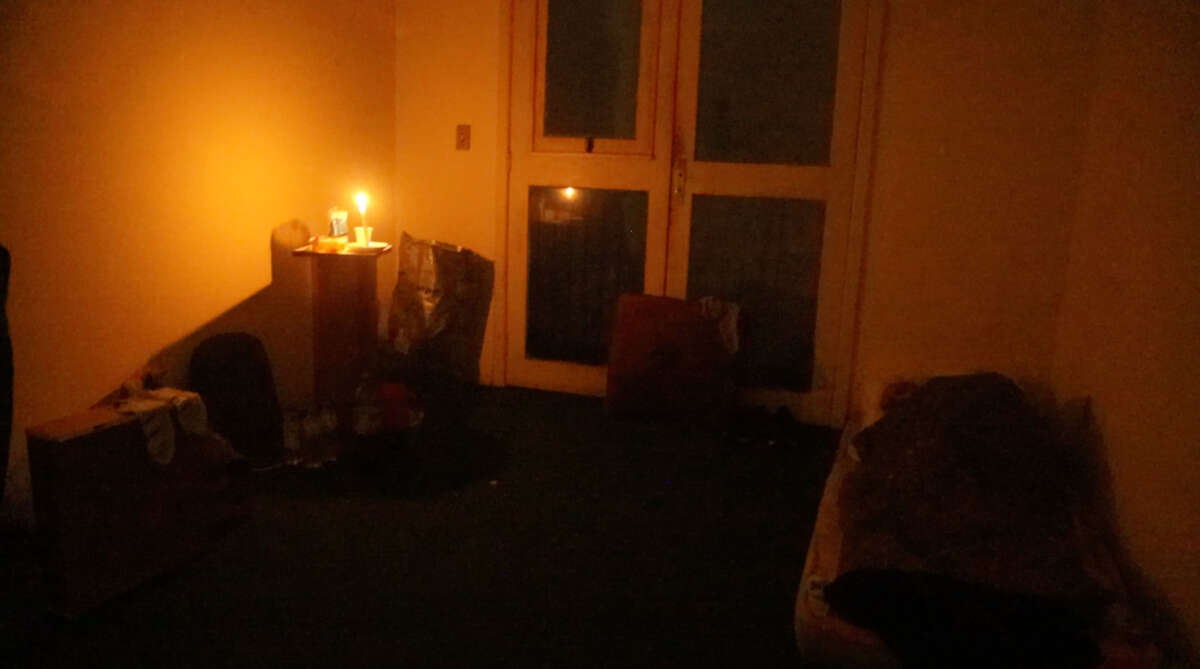
On a rainy evening in late May, one of the leaders of the occupation, Carlos Eduardo Marques Pereira, walked me through the building. He wore a white shirt, a grey wool jacket and a black scarf. He talked passionately about their movement and their struggle to remain in the building.
The occupiers had been so busy, Marques Pereira still hadn’t counted all of the rooms in the building, nor did he know exactly how many families were there.
Beyond the main entrance is a makeshift communal kitchen. It’s located behind a chest-high counter — the area that once served as the hotel’s reception. Bags of nonperishable goods sit on a shelf. Behind them, large pots rest on a pair of portable gas burners hooked up to a propane tank.
Across from the kitchen are the elevators, broken and out of order, and the stairwells, worn and dirty from years of neglect. Little apartments line the halls upstairs. They’re small — one or two tiny rooms each, plus a bathroom. Most of the water is off in the building, except for a few faucets which miraculously work. The name of the family occupying each apartment is written on the door, with their cellphone number, so they can be contacted in an emergency.
“Everyone is homeless. Everyone has their story and we are helping each other. If someone needs a diaper or milk for our little ones, we share amongst each other. If I have bread, I’m going to share with everyone else.”
We step into one apartment at the end of the hall. A man is sleeping on a mattress under a blanket in the corner. A single candle burns on top of a small wooden table.
The occupation is a work in progress — both a stop gap for families in need and a hope for a new tomorrow.
“Hope. That’s the word,” says Marques Pereira. “That’s what everyone here is looking for. Hope for us and everyone that’s here. To see the sparkle in the eyes of everyone that’s here. Especially the kids. Because they are our future. Do you understand?”
Two days after I first visited, hope was what the residents got, in the form of two truckloads of donations of clothes, blankets, towels and mattresses. Residents lined up in a row outside the truck and tossed the black trash bags from one person to the next, piling it all just inside.
Excited conversation echoed across the main hall.
“Incredible,” said Fabiane, a resident in a thick wool sweater, while divvying up the clothes from one of the bags. Her adolescent daughter stood helping beside her. “We are so happy. I have no words to describe it.”
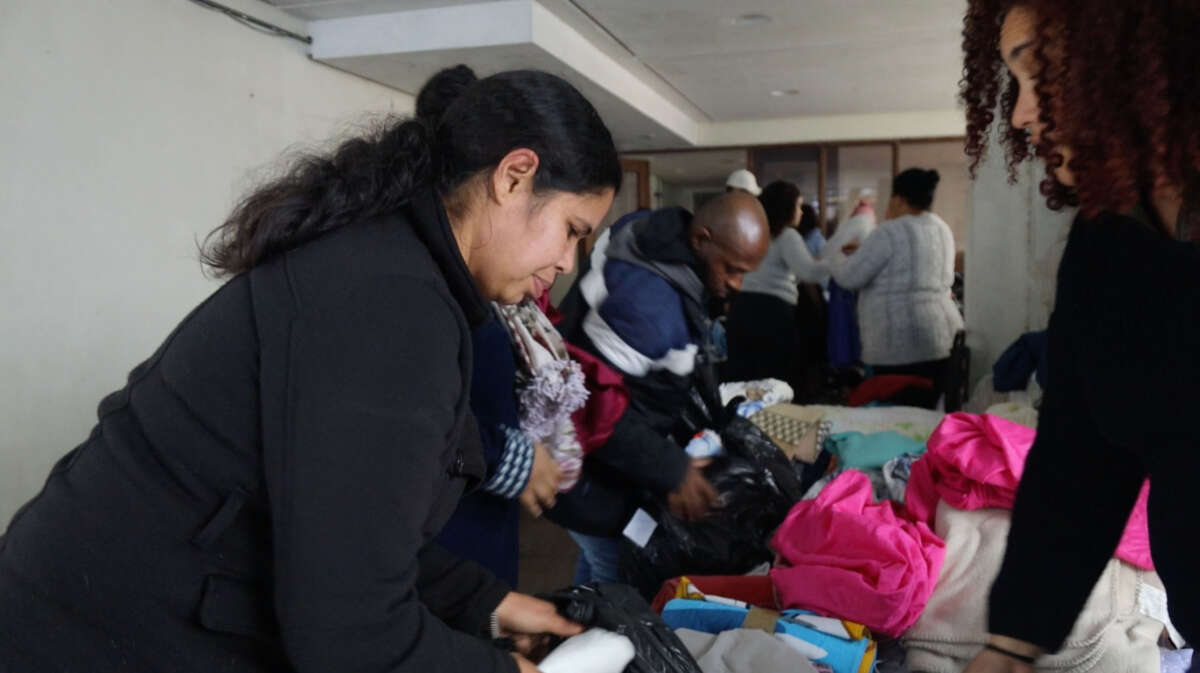
But it has not been easy. No electricity. Little running water. On June 4, police showed up to evict the residents, at the behest of the building owner and a ruling by a local judge. State Representative Matheus Gomes had to step in to negotiate. While they were able to suspend the eviction warrant for two months, the threat still hangs over them.
But they are not alone.
On Saturday, June 8, members of Brazil’s Homeless Workers’ Movement, MTST, occupied another abandoned building downtown, the former local offices of the National Social Security Institute. It’s huge — 25 stories — one of the tallest buildings downtown. It towers over the city’s historic public market, just a block from City Hall, which spent most of May underwater. Since then, a large red banner has been hung from the roof of the building, with the letters MTST.
“The MTST occupied this building to show that transforming these properties for popular housing is possible,” said MTST national coordinator Cláudia Ávila. “Like other political organizations of the working class, our movement proved its potential for collective organization. We helped to rescue, feed and meet the different demands of the population in times of extreme weather events. Together, we want to build a dignified future with guaranteed rights for the entire society of Rio Grande do Sul.”
Housing movements like MTST are widespread in Brazil, where social housing is a right defined under the constitution. Still, there is tremendous need for more.
Hundreds of thousands of families have been left homeless by the floods. Most are staying with family and friends across southern Brazil. President Luiz Inácio Lula da Silva has promised to build a home for every family that lost one. But that will take time.
The Brazilian government announced this week that it would begin to consider purchasing homes in Porto Alegre and the state of Rio Grande do Sul to hand over to flood victims. The residents of the Homeless From the Flood Occupation hope their building will be included in the plan.
But some families have already said they aren’t going to go back.
“We aren’t thinking of returning,” Magdalena Machado told Truthout. She’s a flooding victim from the Islands, a Porto Alegre neighborhood set on an island chain in the Guaiba River, across from downtown. “It hurts. It’s sad. But we don’t think of returning. It’s too much loss.”
Ecologists believe flooding disasters like these will become more common in the future. As deforestation and climate change combine with increasingly extreme weather patterns like El Niño, they create perfect storm scenarios like the one in Rio Grande do Sul.
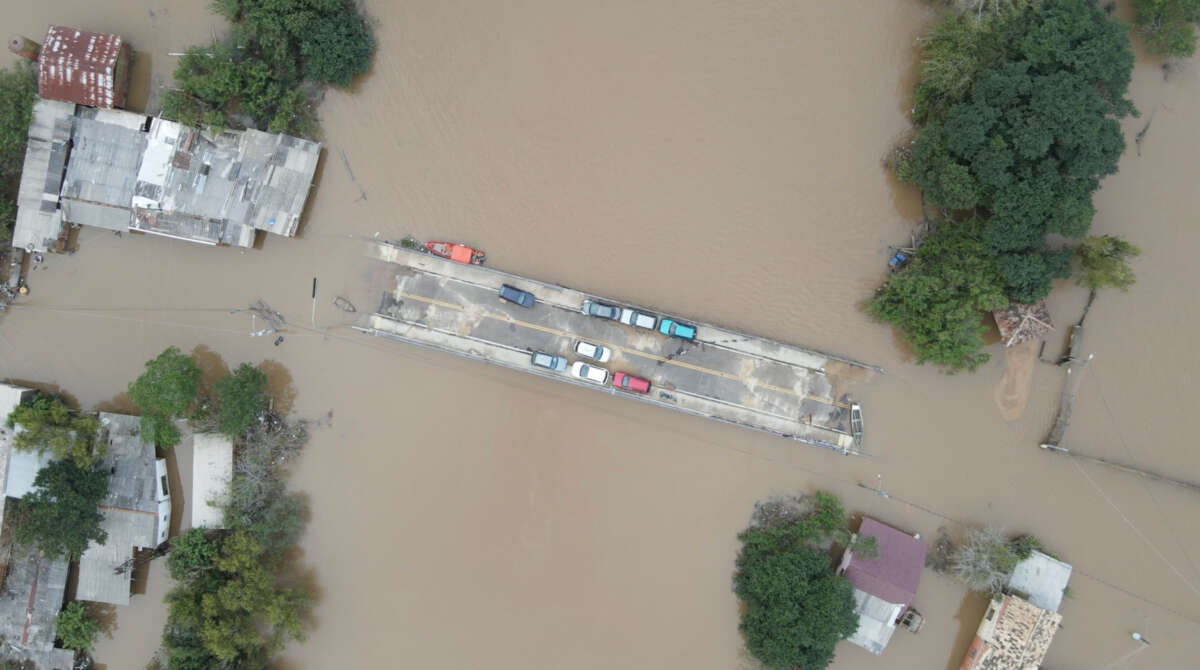
The rains that fell over the last month and a half in southern Brazil — and have continued to fall in recent days — created the third major flooding tragedy to hit the state in just the last year.
Residents say that makes movements like the Homeless From the Flood Occupation all the more important. They offer the hope of rebuilding, despite the trauma of the past and the uncertainty of the future.
“I’m hoping for the chance at a new beginning,” said Viviane Marques. “To live our lives again with dignity. We don’t want anything for free. We just want the chance to begin again.”
Press freedom is under attack
As Trump cracks down on political speech, independent media is increasingly necessary.
Truthout produces reporting you won’t see in the mainstream: journalism from the frontlines of global conflict, interviews with grassroots movement leaders, high-quality legal analysis and more.
Our work is possible thanks to reader support. Help Truthout catalyze change and social justice — make a tax-deductible monthly or one-time donation today.
